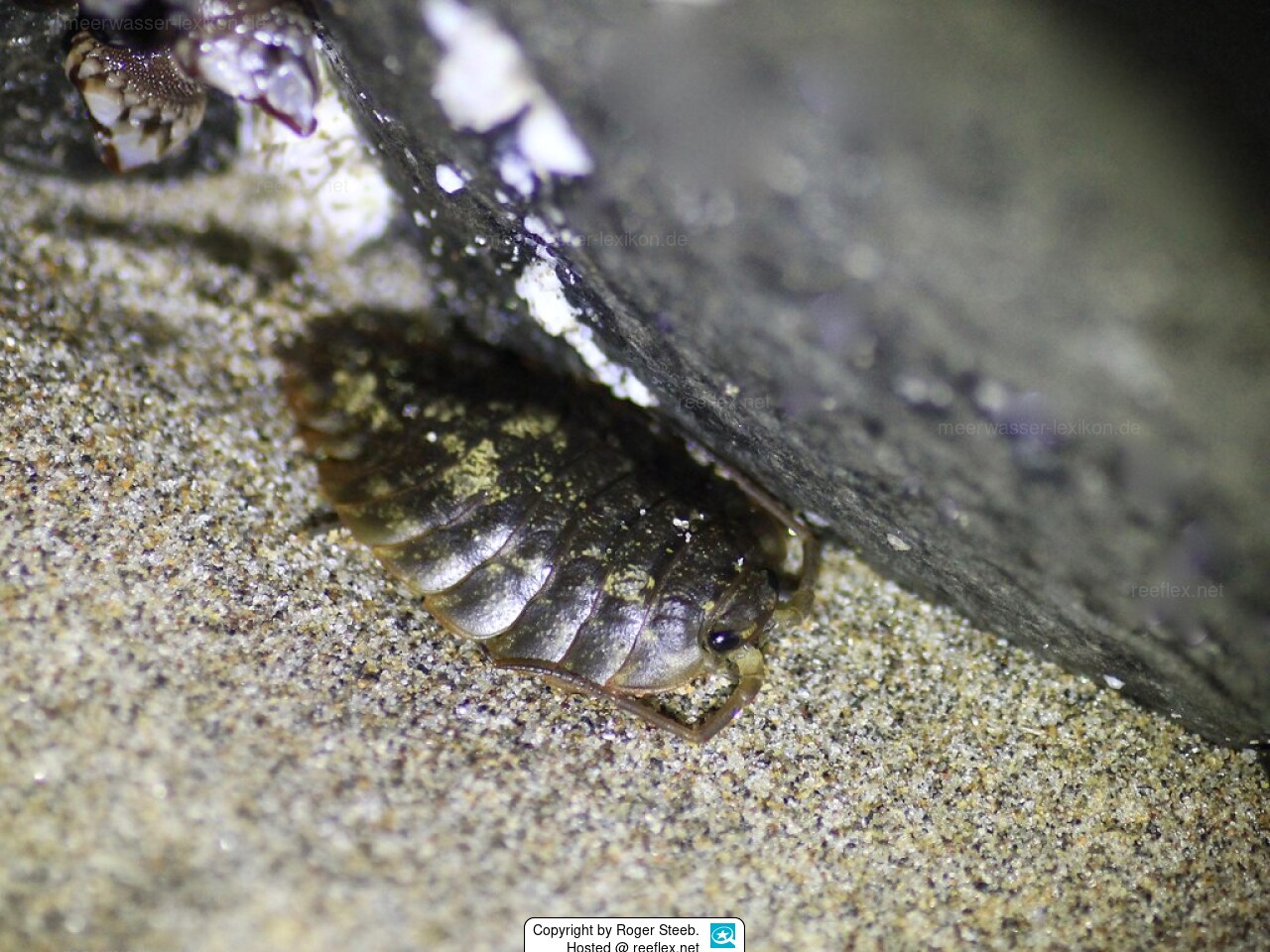Info
Ligia pallasii Brandt, 1833
Ligia belongs to the genus of land isopods. These isopods live in the splash zone of marine stony beaches, rocks and in harbors. Ligia are slightly larger than woodlice. They feed on carrion, microalgae and detritus.
Ligia pallasii has a robust body and grows to approximately 35 mm in size. These woodlice are commonly found in caves and crevices on rocky cliffs. They live in the high intertidal zone from the Aleutian Islands (Alaska) to Santa Cruz (California). The slow-moving Ligia pallasii prefers permanently cool and moist habitats.
Ligia pallasii feeds on dead plants and carrion as well as the algae film from upper tidal rocks. They feed primarily on carrion, which consists of birds and crabs. The lifespan of this woodlice is around 1.5 to 2 years. The breeding season is in the spring and early summer months. The females hatch their young directly. There is no planktonic larval stage.
How to distinguish yourself from similar species:
Due to geographic overlap, they can be confused with their relative Ligia occidentalis in central California. However, where overlap occurs, the two species are generally ecologically separate, with Ligia pallasii preferring sea cliffs and Ligia occidentalis preferring rocky beaches. They live essentially terrestrially, preferring to live near the flood line.
Synonymised names
Aspidoligia pallasii (Brandt, 1833) · unaccepted > superseded combination
Ligia septentrionalis Lockington, 1877 · unaccepted > junior subjective synonym
Ligia stimpsoni Miers, 1878 · unaccepted > junior subjective synonym
Ligia belongs to the genus of land isopods. These isopods live in the splash zone of marine stony beaches, rocks and in harbors. Ligia are slightly larger than woodlice. They feed on carrion, microalgae and detritus.
Ligia pallasii has a robust body and grows to approximately 35 mm in size. These woodlice are commonly found in caves and crevices on rocky cliffs. They live in the high intertidal zone from the Aleutian Islands (Alaska) to Santa Cruz (California). The slow-moving Ligia pallasii prefers permanently cool and moist habitats.
Ligia pallasii feeds on dead plants and carrion as well as the algae film from upper tidal rocks. They feed primarily on carrion, which consists of birds and crabs. The lifespan of this woodlice is around 1.5 to 2 years. The breeding season is in the spring and early summer months. The females hatch their young directly. There is no planktonic larval stage.
How to distinguish yourself from similar species:
Due to geographic overlap, they can be confused with their relative Ligia occidentalis in central California. However, where overlap occurs, the two species are generally ecologically separate, with Ligia pallasii preferring sea cliffs and Ligia occidentalis preferring rocky beaches. They live essentially terrestrially, preferring to live near the flood line.
Synonymised names
Aspidoligia pallasii (Brandt, 1833) · unaccepted > superseded combination
Ligia septentrionalis Lockington, 1877 · unaccepted > junior subjective synonym
Ligia stimpsoni Miers, 1878 · unaccepted > junior subjective synonym







 Roger Steeb, USA
Roger Steeb, USA




